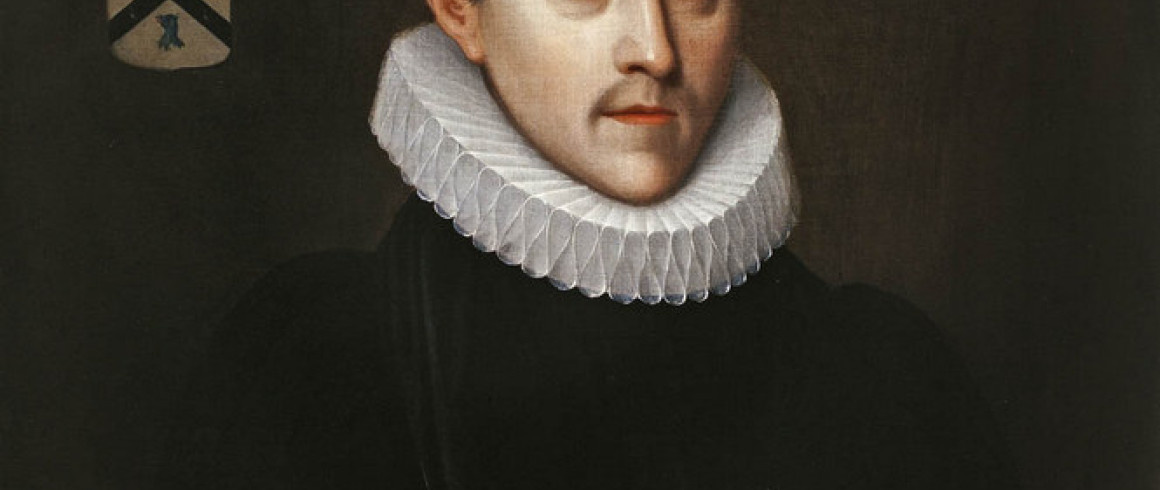Halloween Horror
With Halloween fast approaching, let’s take a look back through time at some of the more unpleasant fates to have befallen Pembroke’s alumni…
Out of the Frying Pan, into the Fire
[caption id="attachment_22317" align="alignleft" width="150"] Ridley's Walk[/caption]
Ridley's Walk[/caption]
Almost every member of College will have wandered down Ridley’s Walk at some point, but behind its peaceful paving stones lurks a grisly tale of martyrdom. Nicholas Ridley studied Greek and Latin at Pembroke Hall (as it was then) and went on to become Master of the College in 1540. Formerly chaplain to Archbishop Cranmer, in 1550 he was elevated to the role of Bishop of London. His support for the Protestant claimant to the throne, Lady Jane Grey, over the Catholic Mary led to his downfall in 1553. He was sent to the Tower and in October 1555 was burned at the stake in Oxford. Bishop Ridley’s burning was apparently a matter of extreme agony, with an ineptly-built fire consuming only his lower half and causing him a slow, horrible death.
Strangely, Bishop Ridley is not the only Pembroke alumnus to have been burned at the stake. He was in fact preceded that same year by two other Pembroke men: John Rogers, the editor of the controversial ‘Matthew Bible’, who had the dubious honour of being the first English Protestant martyr under Mary I; and John Bradford, who is said to have coined a famous phrase upon witnessing the execution of some criminals: “But for the grace of God there goes John Bradford”.
The Clerics in the Tower
[caption id="attachment_22318" align="alignright" width="150"] Matthew Wren[/caption]
Matthew Wren[/caption]
Pembroke famously owes its Chapel to a vow made by Matthew Wren, a former Pembroke student and the Bishop of Ely, while he was imprisoned in the Tower of London. Wren was sent to the Tower by the Parliamentarian faction in 1641, on account of his support for Archbishop Laud, his stance against Puritanism and his refusal to acknowledge Oliver Cromwell’s authority. Laud, who was also sent to the Tower, was executed in 1645, but Wren remained in prison for eighteen years and vowed to devote a sum of money to a holy purpose if he were ever freed. Upon his release in 1659, he commissioned his nephew, Christopher, to design a chapel for his former College. Matthew Wren consecrated the new Chapel in 1665, and was buried there two years later. Cromwell, meanwhile, died in 1658 and was subsequently dug up, hanged and beheaded. His severed head was circulated around England before being buried on the premises of his alma mater, Sidney Sussex College, which he allegedly still haunts.
Cromwell also adversely affected the life of another Pembroke graduate, Richard Crashaw. Crashaw was an Anglican cleric and a Fellow of Peterhouse College. He fled England in 1644, after Cromwell’s forces took control of the city of Cambridge. He travelled from Leiden to Paris and then to Rome, often living in miserable poverty. He died in Italy in 1649, possibly as a result of poisoning.
Poet in Prison
[caption id="attachment_22319" align="alignleft" width="150"] Christopher Smart[/caption]
Christopher Smart[/caption]
Christopher Smart, who is remembered by the College not only for his poetry but also on account of his fondness for cats, suffered numerous difficulties after leaving Cambridge. In 1757 a ‘Commission of Lunacy’ was taken out against him, as a result of which he spent nearly six years imprisoned in a lunatic asylum with only his cat, Jeoffry, for company. He left the asylum in 1763, but in 1770 he was arrested for debt and sent to the King’s Bench Prison in London. He died there after only a few months, either from liver failure or pneumonia.
